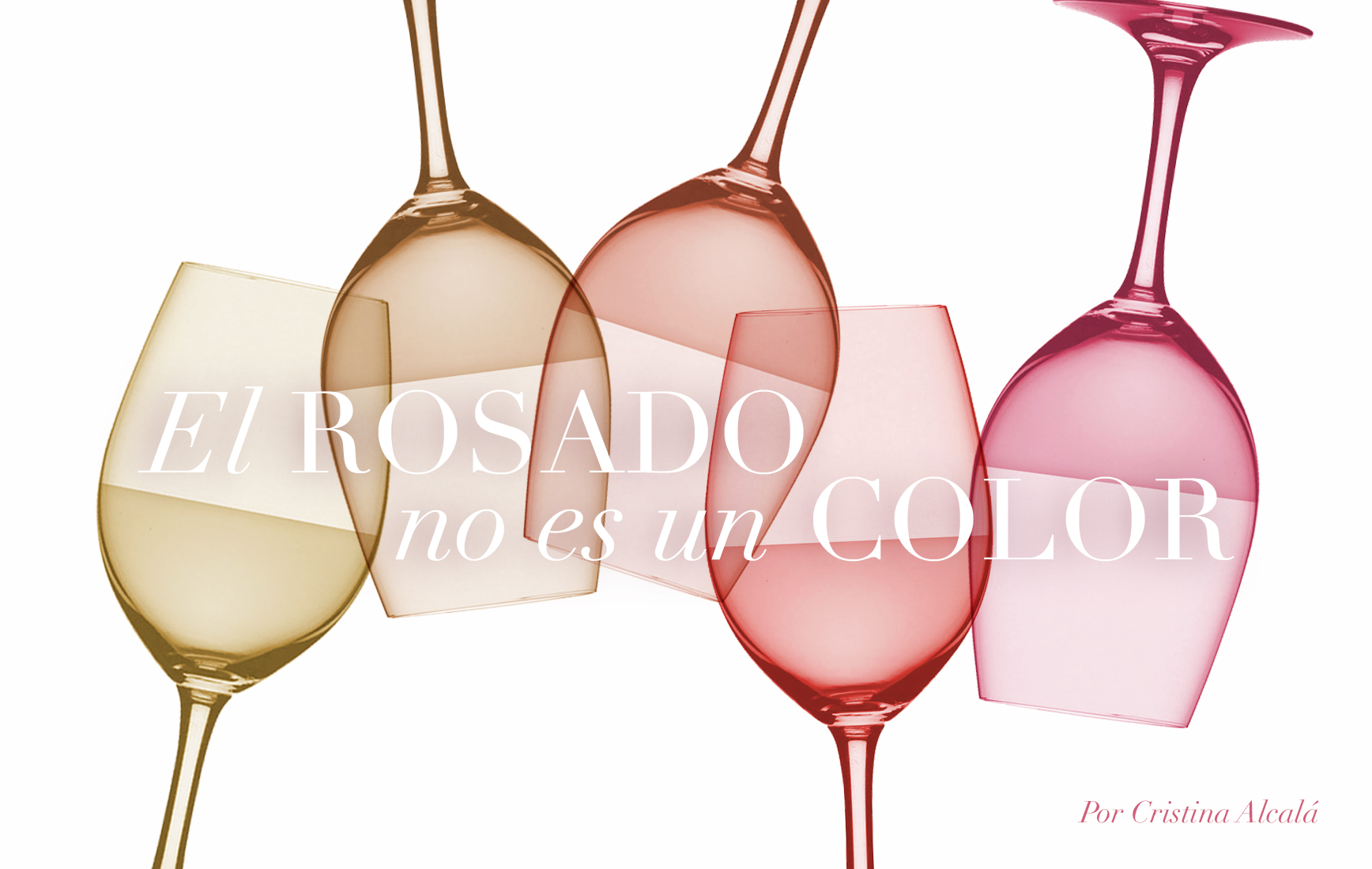Rosé is not a color

There are certain questions that still surprise me and give me reason to ponder since I began working in the wine industry. Among them is why rosé wines are referred to as rosaditos (or “little pink”) in Spanish. Early on in my career as a sommelier, I remember that the few times customers asked for a rosé, it was usually to avoid a couple’s argument. One person wanted red, the other white, so in order to avoid an argument they resigned themselves to a rosé without considering further options. On rare occasions someone asked for a rosé as their first choice, and almost no one accepted recommendations to try them. A sommelier recommending a rosé wine!
Several years have gone by, and fortunately it seems like the situation has changed somewhat. Even so, rosé wines still carry the stigma of being seen as a wine for novices, a wine that doesn’t really seem like a wine at all, falling into some gray zone between red and white and lacking sufficient glamour to be brought along to a meal with friends. How often have you given or received a rosé as a gift?
Rosé wines remain closely linked to summer consumption, coming out during the Spring-Summer season to flaunt their bright, cheerful colors. But a rosé isn’t just a summer wine or a wine for people who don’t understand wine, and it is definitely not a “woman’s wine.” These tired, outdated assertions don’t help the many wineries that are committed to producing new kinds of rosé.
About Styles and Trends
“I think a good rosé is the most difficult kind of wine to make,” an enologist from Navarra told me recently. Faced with the divergence between the attitude and prejudice toward the consumption of rosé and the difficulty in producing—and marketing—the wine, many winemakers have responded by bringing out daring creations that break the mold, changing the Spanish rosé landscape in the process. Some winemakers have gone so far as to say that “since no one is drinking it anyway, I might as well make the wine I like.” This response and new attitude has changed the market, making it possible to find very dignified rosés that offer great quality and are very different from each other. These wines are defined by varying chromatic intensity and come as varietals or blends, fruity and intense, fresh and light, barrel fermented, luscious and mature...
The evolution of rosé wines has been a bit of a rollercoaster ride, marked by moments of elation as well as vertigo. The first classic rosés from traditional wine regions gave way to the success of the light, fresh and fruity Garnacha rosés from Navarra. Then came rosés made from Cabernet Sauvignon, Merlot or Syrah, full-bodied and so deep in color they almost resemble a young red. These paved the way for a revival of local varieties to make rosés that are more personal, innovative and unconventional in style, wines that are barrel-fermented and don’t have to be consumed within the year.
Rosé is no longer a cheap wine to have at BBQs or as a chilled summer drink. The range in terms of price and quality has expanded greatly, allowing rosé to join the ranks of gastronomic wines.
After spending a few years in exile—banished not only by consumers, but by wineries as well—it seems like rosé is making an international comeback with France, Italy, the United States and the United Kingdom all jumping on the rosé bandwagon. Several wine regions are developing their own unique style, and new markets and consumers are embracing rosé as a wine to be enjoyed in its own right, suitable for special occasions. Whatever the reasons—whether it is due to the popularity of sparkling rosés, the success of very pale rosés in the traditional style of Provençal wines or a new generation of consumers without preconceived notions—rosé wines are no longer rosaditos.
Cristina Alcalá
